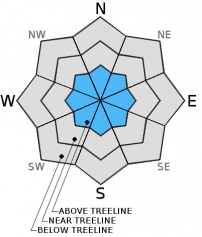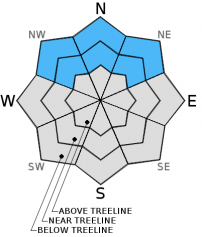| Monday | Monday Night | Tuesday | |
|---|---|---|---|
| Weather: | Mostly cloudy skies with isolated snow showers in the afternoon. | Mostly cloudy skies with isolated snow showers in the evening. | Partly cloudy skies. |
| Temperatures: | 22 to 30 deg. F. | 9 to 15 deg. F. | 24 to 32 deg. F. |
| Mid Slope Winds: | West | West | West |
| Wind Speed: | Light winds increasing to 10 to 15 mph in the afternoon. | 10 to 15 mph in the evening, becoming light. | Light winds |
| Expected snowfall: | Trace | Trace | 0 |
| Monday | Monday Night | Tuesday | |
|---|---|---|---|
| Weather: | Mostly cloudy skies with isolated snow showers in the afternoon. | Mostly cloudy skies with isolated snow showers in the evening. | Partly cloudy skies. |
| Temperatures: | 16 to 23 deg. F. | 2 to 12 deg. F. | 20 to 26 deg. F. |
| Ridge Top Winds: | West | West | West |
| Wind Speed: | 15 to 20 mph with gusts to 30 mph. | 15 to 25 mph with gusts to 35 mph. | 15 to 20 mph. Gusts up to 30 mph in the morning. |
| Expected snowfall: | Trace | Trace | 0 |


























